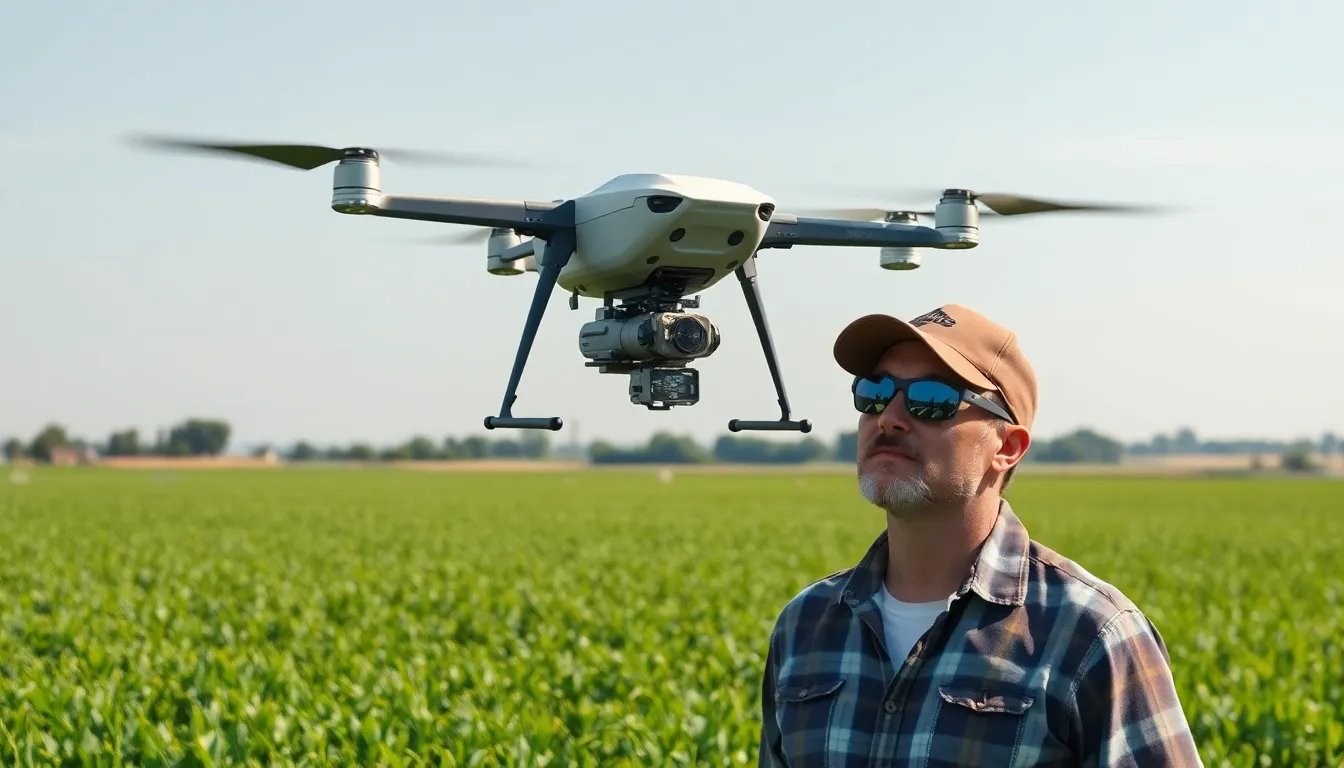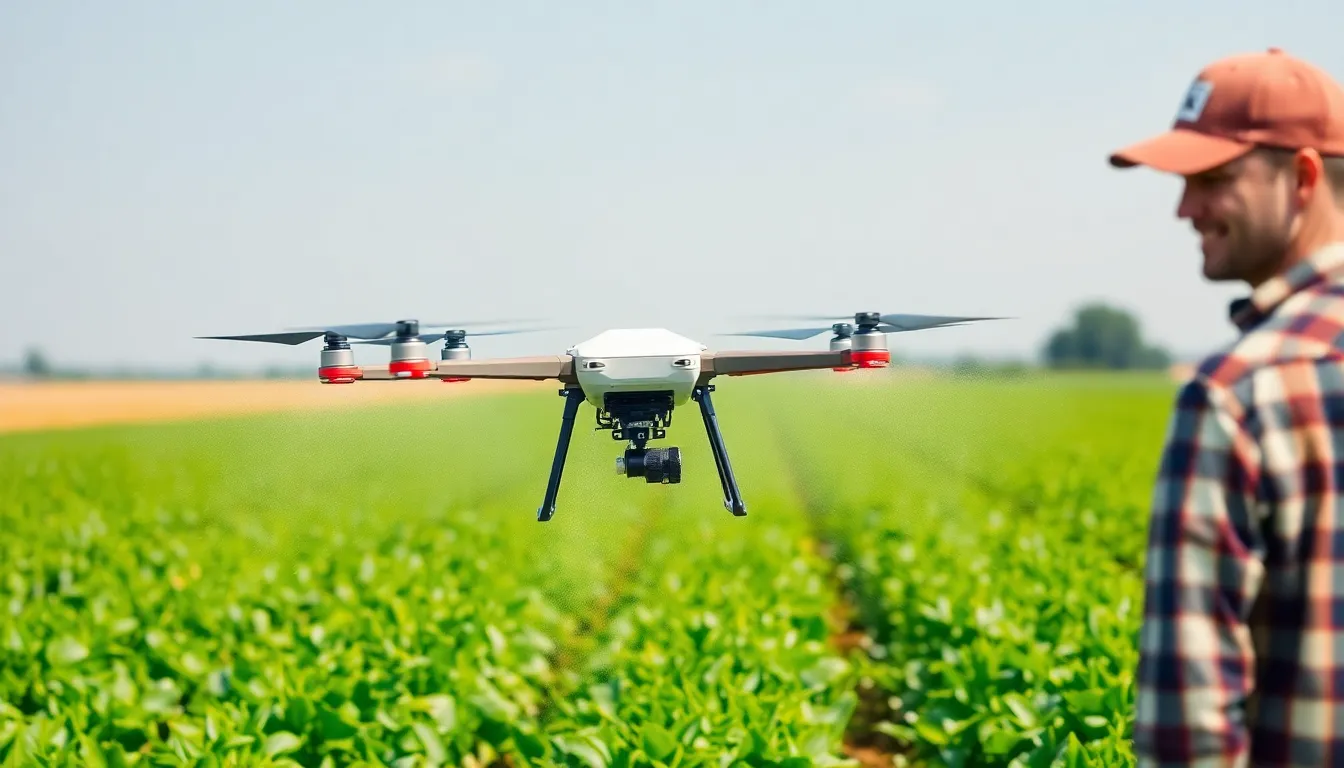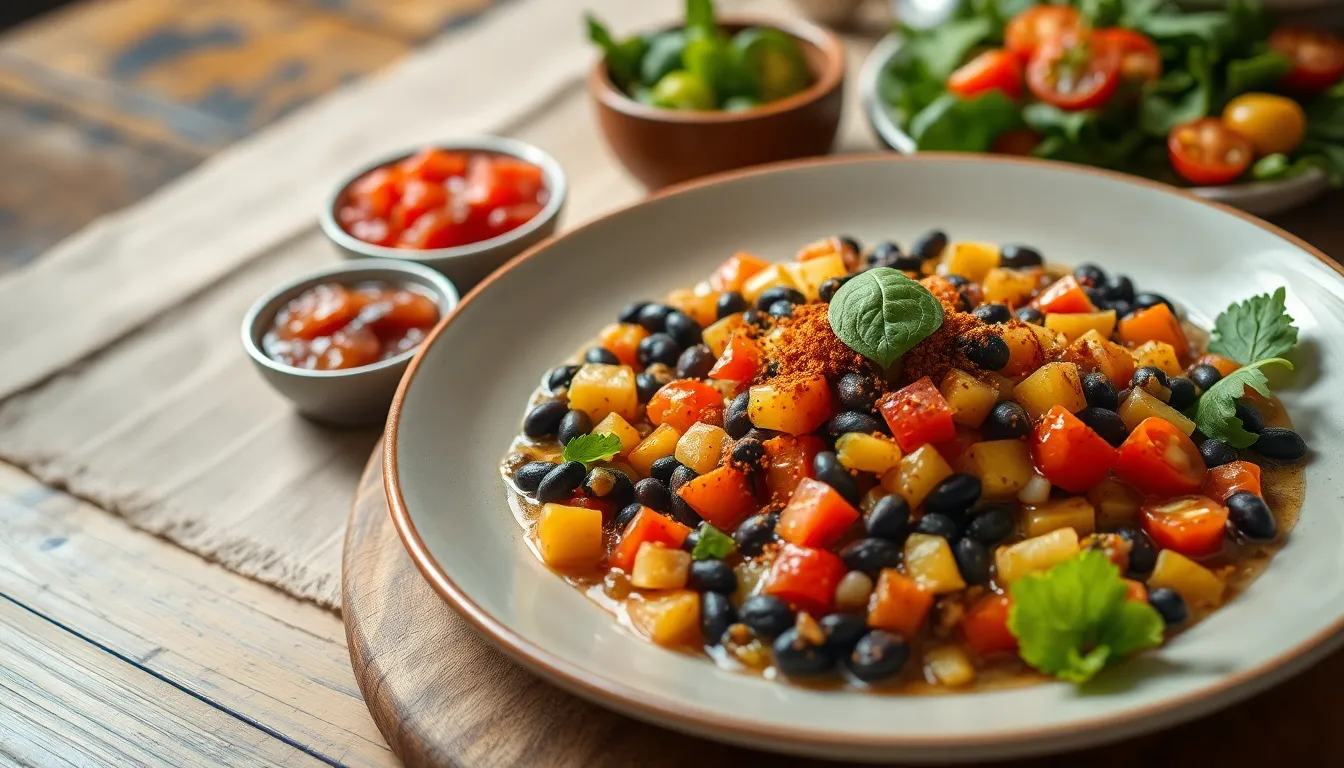In a world where time is money and efficiency reigns supreme, spray drones are taking the agricultural sector by storm. These high-flying wonders don’t just look cool; they’re revolutionizing how farmers tackle pest control and crop management. Imagine a drone zipping through the skies, delivering precise doses of pesticides or fertilizers while you sip your coffee—talk about multitasking!
Gone are the days of bulky machinery and endless hours in the field. With spray drones, farmers can cover vast areas quickly and accurately, reducing labor costs and minimizing environmental impact. Plus, they bring a touch of sci-fi magic to farming that’ll make anyone feel like they’re living in the future. Whether you’re a seasoned farmer or just curious about the latest tech, spray drones are here to make waves—and they might just be the secret weapon your crops have been waiting for.
Table of Contents
ToggleOverview of Spray Drones
Spray drones represent a significant advancement in agricultural practices. These devices utilize cutting-edge technology to enhance crop management and pest control. Farmers employ spray drones for precise applications of pesticides and fertilizers, which minimizes waste and environmental harm. Generally, traditional equipment encompasses bulkiness and inefficiency, while drones streamline this process.
Pesticide application becomes more accurate, allowing for effective targeting of problem areas. With capabilities to cover large fields quickly, spray drones reduce time and labor costs significantly. They typically carry payloads ranging from 5 to 20 liters, offering substantial coverage in each flight.
Some models feature real-time mapping and analytics, enabling farmers to assess crop health and optimize inputs effectively. This data-driven approach supports informed decision-making and improves overall yields. Many manufacturers design spray drones with user-friendly interfaces to simplify operation and management for all users.
Notably, spray drones contribute to sustainable agricultural practices. Reduced chemical runoff results from their ability to apply only necessary amounts, safeguarding nearby ecosystems. Farmers who adopt this technology often experience increased productivity and profitability. With ongoing advancements in battery life and software, the future of spray drones looks promising, further pushing the boundaries of modern agriculture.
Benefits of Using Spray Drones

Spray drones offer numerous advantages in modern agriculture, enhancing efficiency and addressing environmental concerns.
Increased Efficiency
Efficiency dramatically improves with spray drones. These devices can cover fields quickly, applying pesticides and fertilizers uniformly. Farmers can complete tasks in a fraction of the time compared to traditional machinery. Payload capacities range from 5 to 20 liters, allowing for significant operational flexibility. Increased precision in application ensures that crops receive exactly what they need, reducing waste. Real-time mapping and analytics further enhance decision-making processes. Many farmers experience higher yields due to optimized input management, translating into better returns on investment.
Environmental Considerations
Environmental impacts significantly decrease with the use of spray drones. Reduced chemical runoff becomes a reality, promoting healthier ecosystems. Precision application minimizes over-spraying, which contributes to less pesticide and fertilizer waste. This trend supports sustainable practices within agriculture. Additionally, by replacing bulky machinery, spray drones limit soil compaction and habitat disruption. Integrating these technologies can lead to more responsible farming that prioritizes ecological balance. Farmers adopting spray drones often find a dual benefit of improved productivity alongside a commitment to environmental stewardship.
Types of Spray Drones
Spray drones fall into various categories, tailored for specific applications. Each type brings certain features that enhance their utility in different contexts.
Agricultural Spray Drones
Agricultural spray drones streamline crop management tasks. These devices are designed for precision application of pesticides and fertilizers, often carrying payloads between 5 to 20 liters. They enable farmers to cover expansive fields rapidly, reducing time spent compared to traditional methods. Real-time mapping allows users to assess crop health, optimizing input applications. Enhanced features, like GPS tracking, further improve accuracy. The accessibility of user-friendly interfaces means that farmers can operate these drones effectively, regardless of experience level.
Industrial Spray Drones
Industrial spray drones cater to larger-scale operations, extending beyond agricultural applications. Their robust design supports significant payload capacities and more extensive operating ranges. Industries such as construction, forestry, and mining utilize these drones for tasks like pest control, dust suppression, and material distribution. Many models offer advanced automation features, allowing for autonomous flights over designated areas. High-efficiency nozzles ensure even distribution of chemicals or materials. Incorporating data analytics ensures compliance with regulations and enhances safety measures.
Regulations and Compliance
Understanding regulations and compliance is crucial for the safe operation of spray drones in agriculture and other industries. Ensuring adherence to these standards mitigates risks and enhances safety during drone deployment.
Safety Standards
Federal Aviation Administration (FAA) establishes safety standards for drone operations. Compliance with Part 107 regulations is mandatory, which includes maintaining Visual Line of Sight (VLOS) while flying. Weight restrictions typically apply; drones must weigh less than 55 pounds to avoid additional certification. Operators must also complete a knowledge test to obtain a Remote Pilot Certificate. Regular maintenance checks ensure drones function correctly and meet safety performance criteria. Additionally, insurers often require adherence to safety standards to qualify for coverage.
Operational Guidelines
Operational guidelines dictate how and when to use spray drones effectively. Flight altitude must often remain between 5 to 20 feet above the ground to optimize coverage while minimizing drift. Operators must respect local airspace restrictions and obtain necessary permissions when flying near restricted zones or populated areas. Implementing GPS technology enhances navigation and compliance with geofencing requirements. Training programs often provide operators with essential knowledge on safe maneuvering and effective spraying techniques, ensuring compliance with environmental regulations. Keeping detailed records of flight operations helps further demonstrate adherence to these guidelines.
Spray drones are reshaping the agricultural landscape by enhancing efficiency and promoting sustainability. Their ability to deliver precise applications of pesticides and fertilizers not only boosts crop yields but also minimizes environmental impact. As technology continues to evolve these drones are becoming essential tools for farmers looking to modernize their practices.
With user-friendly interfaces and advanced features like real-time mapping they empower operators to make informed decisions that benefit both their crops and the ecosystem. As regulations evolve to accommodate these innovations the future of spray drones looks bright paving the way for a more productive and environmentally responsible agricultural sector.



